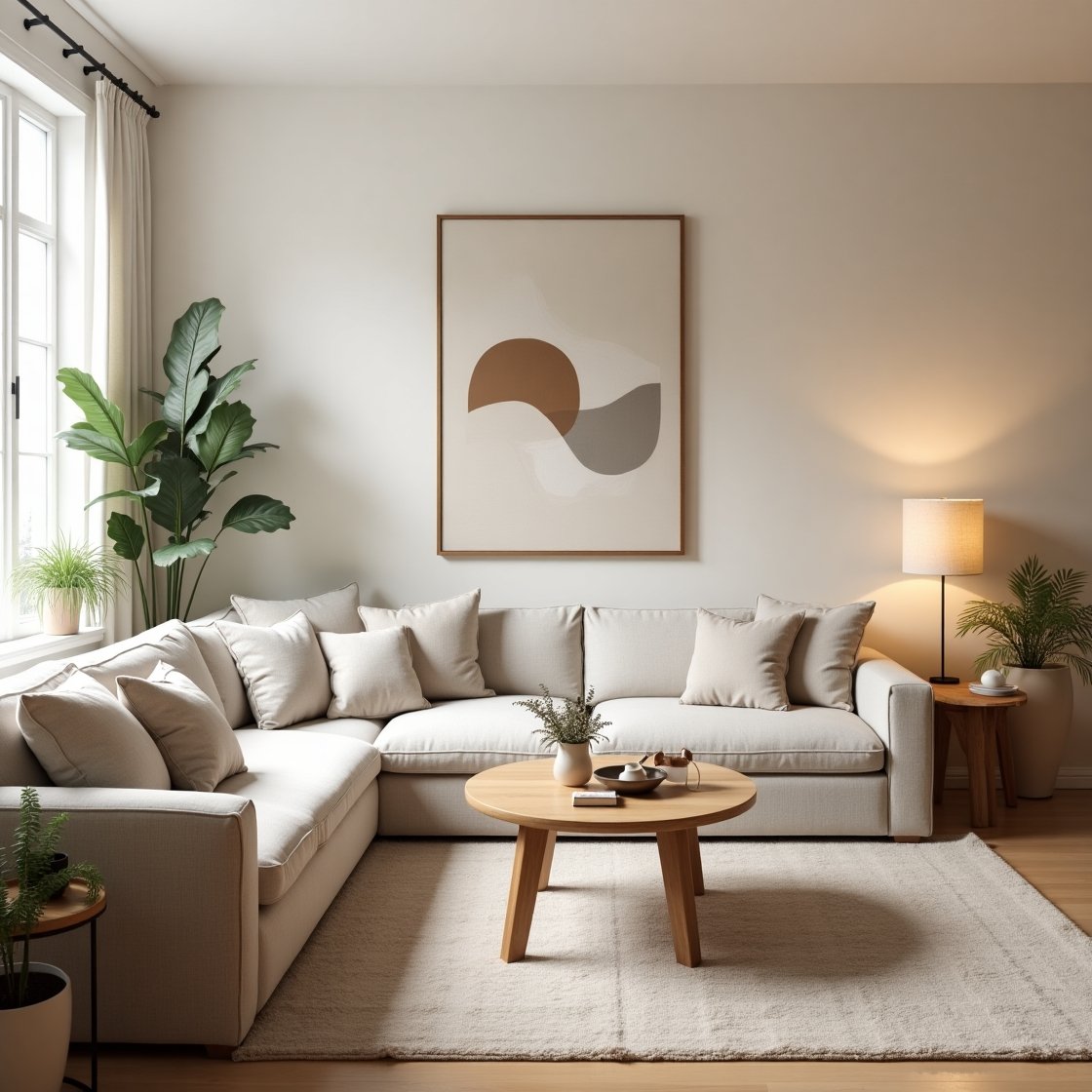Neutral colors are timeless, calming, and incredibly versatile. They create elegant, peaceful spaces—but when used without strategy, they can feel flat, cold, or even lifeless. The good news? Neutral doesn’t have to mean boring.
In this article, you’ll learn how to decorate a room using neutral tones in a way that feels rich, layered, and full of personality. With the right mix of textures, tones, and accents, you can create a space that’s both serene and stunning.
1. Understand the Different Types of Neutrals
Neutral colors go far beyond beige or gray. A well-designed neutral palette pulls from a wide spectrum of soft, muted tones.
Main types of neutrals:
- True neutrals: white, black, gray, brown, taupe, ivory
- Warm neutrals: cream, camel, tan, greige, blush
- Cool neutrals: slate, charcoal, soft blue-gray, stone
- Earthy neutrals: clay, sand, terracotta, olive, mushroom
Start by selecting a base tone (e.g., warm greige or soft gray) and build from there using variations in tone and warmth.
2. Layer Multiple Shades of the Same Color
A single tone can feel one-dimensional—but layering different shades of a neutral creates depth.
Try this:
- Use ivory walls, beige furniture, and camel pillows
- Pair light gray bedding with charcoal curtains and black accessories
- Combine warm cream with taupe, oatmeal, and tan for a cozy vibe
Stick to the same family of undertones (warm or cool) to maintain harmony across the space.
3. Bring in Texture to Add Richness
Texture is the secret weapon for making neutral rooms feel inviting and sophisticated.
Ideas for texture:
- Woven baskets or cane furniture
- Chunky knit blankets
- Linen curtains or bedding
- Leather, suede, or velvet pillows
- Textured wall treatments like paneling, plaster, or shiplap
The more tactile variety you introduce, the more visually interesting your room becomes—even with zero color.
4. Mix Materials and Finishes
In a neutral room, materials become the star of the show. Vary them to keep the eye engaged.
Examples:
- Matte ceramics + glossy tiles
- Raw wood + brushed brass
- Soft upholstery + concrete accents
- Marble + natural fiber rugs
This contrast adds luxury and dimension without needing bold color.
5. Add Statement Lighting
Lighting in a neutral space doesn’t just serve function—it becomes a focal point.
Look for:
- Sculptural pendant lights or chandeliers
- Brass or black sconces for contrast
- Oversized floor lamps
- Layered lighting: overhead + table lamps + accent lighting
Light adds warmth and style—and in neutral rooms, it highlights every detail of your textures and finishes.
6. Include Natural Elements
Nature adds warmth, softness, and life to neutral decor.
Try:
- Wooden furniture (light oak, walnut, or rustic finishes)
- Stone or clay accessories
- Green plants or dried botanicals
- Rattan or jute rugs
- Woven trays or baskets
These organic materials introduce movement and imperfection—making the room feel grounded and human.
7. Use Art and Wall Decor for Personality
Neutral doesn’t mean plain. Wall decor is a great place to express your style without disrupting the palette.
Options:
- Black-and-white photography
- Monochromatic abstract art
- Wood, metal, or canvas textures
- Neutral prints with soft geometry or line art
- Framed textiles or vintage maps
Hang pieces at eye level and balance scale with your furniture. Even in soft tones, art adds soul to your space.
8. Incorporate Subtle Patterns
Patterns can add energy and rhythm to a neutral room—but keep them soft and tonal.
Examples:
- Herringbone or chevron rugs
- Subtle stripes or plaids in bedding
- Moroccan or tribal print pillows in beige or taupe
- Tone-on-tone wallpapers
- Patterned curtains in similar hues
Patterns don’t have to shout to make an impact. In neutrals, they whisper style.
9. Use Black or Dark Contrast to Ground the Space
Adding touches of black or deep charcoal gives a neutral room structure and drama.
Try:
- Black metal light fixtures
- Picture frames, table legs, or cabinet hardware
- A black mirror or coffee table
- Charcoal cushions or throws
- A single bold painting or sculpture
This contrast anchors the palette and keeps things from feeling too soft or washed out.
10. Don’t Forget the Power of Greenery
Plants are a designer’s favorite trick in neutral spaces. They:
- Add natural color without disrupting the palette
- Bring softness and movement
- Complement any design style
- Purify the air and boost mood
Great choices:
- Snake plant
- Fiddle-leaf fig
- Monstera
- Pothos or trailing ivy
- Dried eucalyptus or pampas grass
Even one plant can completely change the feel of a neutral room.
Bonus: Use a Statement Piece to Add Quiet Drama
Want a single wow factor? In a neutral space, it can be as simple as a standout shape or texture.
Examples:
- A sculptural coffee table
- An oversized mirror
- A curvy or vintage chair
- A stone or plaster fireplace surround
- An arched bookshelf or unique ceiling light
A single dramatic element gives the space character without adding visual noise.
Neutral Done Right Feels Warm, Rich, and Timeless
Neutral rooms aren’t boring—they’re an invitation to focus on texture, shape, light, and materials. When designed with intention, neutral interiors feel calm, layered, and deeply stylish.
Remember:
- Use multiple shades of the same neutral for depth
- Layer in textures, patterns, and materials
- Anchor the space with black, wood, or natural elements
- Highlight everything with good lighting and art
- Keep the palette focused—but never flat
Your neutral room isn’t a blank space—it’s a canvas for thoughtful, elegant design.
